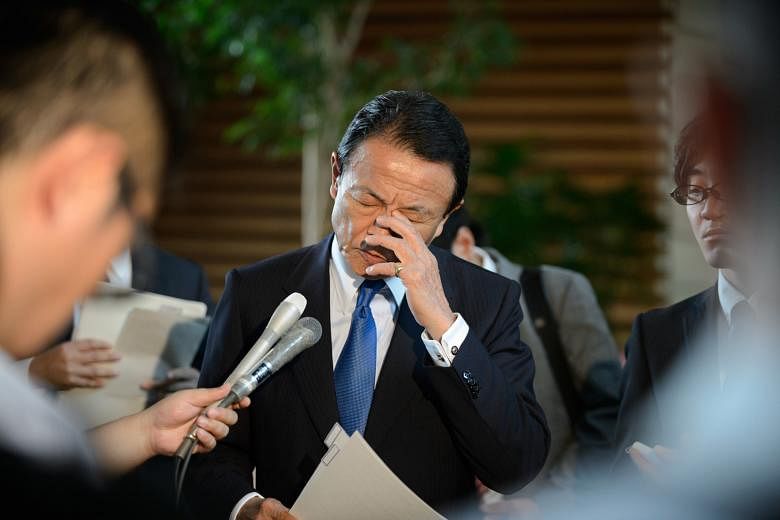TOKYO • Sirens blared and phones chimed as millions in Japan's north and north-east were yesterday jolted awake to the ominous reality that a ballistic missile from North Korea could be headed their way.
Those in 12 prefectures from Hokkaido to Fukushima were told to seek shelter underground or inside a sturdy building, via the national J-Alert warning system at 6.02am local time (5.02am in Singapore).
This was four minutes after the missile was fired at 5.58am, and four minutes before it flew over Hokkaido at 6.06am towards the Pacific Ocean, which it splashed into at 6.12am.
In Tokyo, Japanese Prime Minister Shinzo Abe, looking weary and visibly shaken, met reporters outside his residence before 6.20am.
"We will immediately collect and analyse information, and we will make every effort to protect the lives of the people firmly," he said.
There was no damage to any aircraft, ship or property, but the launch has given Japan a rude awakening. It was the first time a missile has flown over Japan's mainland to splash into the Pacific since 2009.
Bullet trains plying north-eastern Japan routes ground to a halt for 30 minutes yesterday before being given the all-clear to resume operations, leading to delays that lasted for hours.
Local media reported a pervasive sense of unease in the affected areas yesterday morning. Many residents of rural areas expressed helplessness at having nowhere to hide.
One of them, Ms Etsuko Kaoru, said on Twitter: "I live in the countryside. There are no sturdy buildings, there is no underground, there is no escape."
Singaporean tourists in Sapporo, like senior product specialist Seet Yi Ting, 33, were unfazed.
She said: "I'm not very worried because I think the Japanese government is very efficient. Life is back to normal here."
Kobe University security expert Tosh Minohara said despite some hiccups in several municipalities where the alert failed to go out, "within the limited time frame, what needed to be done was done".
He added: "North Korea is so near, so there is going to be very little reaction time."
Yesterday, the Self-Defence Forces deployed Patriot Advanced Capability-3 (PAC-3) missile units at three US bases in Japan, in a previously scheduled drill.
Experts noted that the PAC-3, which can destroy targets at altitudes of up to 20km, would not have been effective against yesterday's missile, which reached a maximum altitude of 550km and fell 1,180km from the Hokkaido coast.
Japan also has Standard Missile-3 (SM-3) units on Aegis warships that can intercept ballistic missiles outside the earth's atmosphere up to an altitude of 500km.
Japan did not try to shoot down the missile yesterday after assessing that it would pose no danger.
Dr Ken Jimbo of Keio University said Pyongyang appeared to be "testing where the red line for the US is" with yesterday's launch.
"With the variations in its different missiles, it wants to demonstrate its technology and ability to launch a strategic surprise."
Dr Masashi Nishihara of the Research Institute for Peace and Security in Tokyo said that Japan, as a staunch United States ally, will be caught between a rock and a hard place as the North can fire missiles towards Japan "as a signal to the US" without directly attacking the US.
Dr Minohara called it a Catch-22 situation. North Korean leader Kim Jong Un "needs to continue firing his missiles or he would look weak domestically. A dictator does not want to look weak", he said.
He added: "He sees Japan as militarily meek and impotent. It's all calculated. If he fires across Chinese or Russian airspace or nearer towards US territory, it would provoke a much, much different response.
"And he knows that."
Walter Sim


